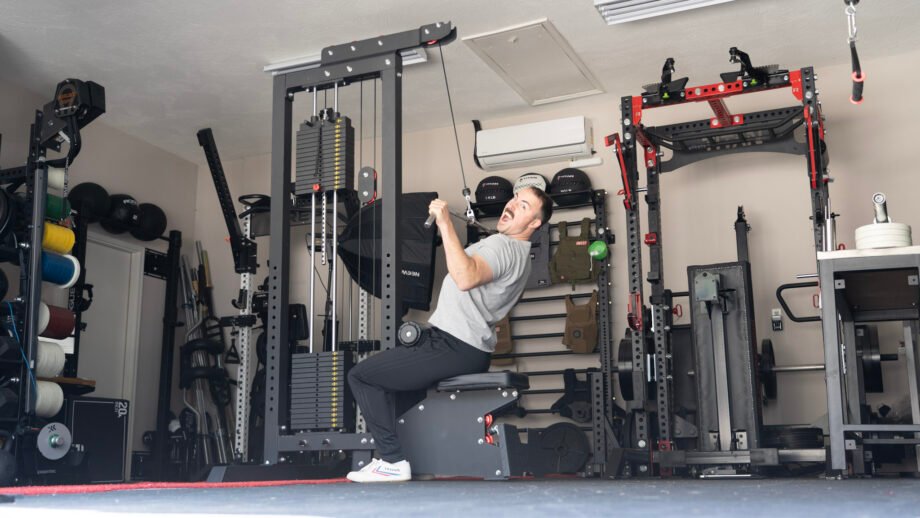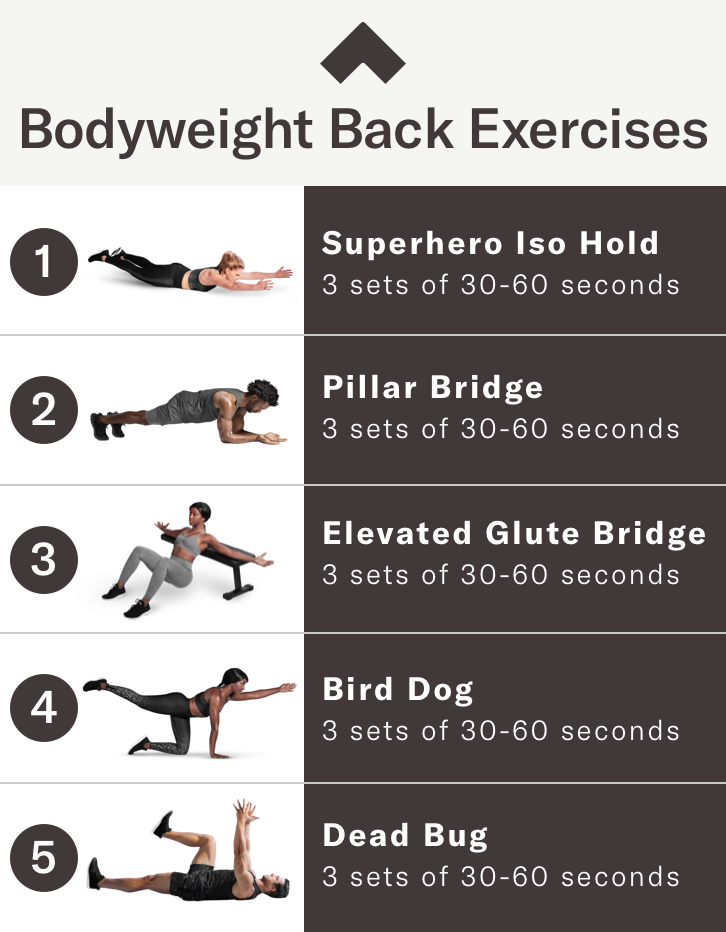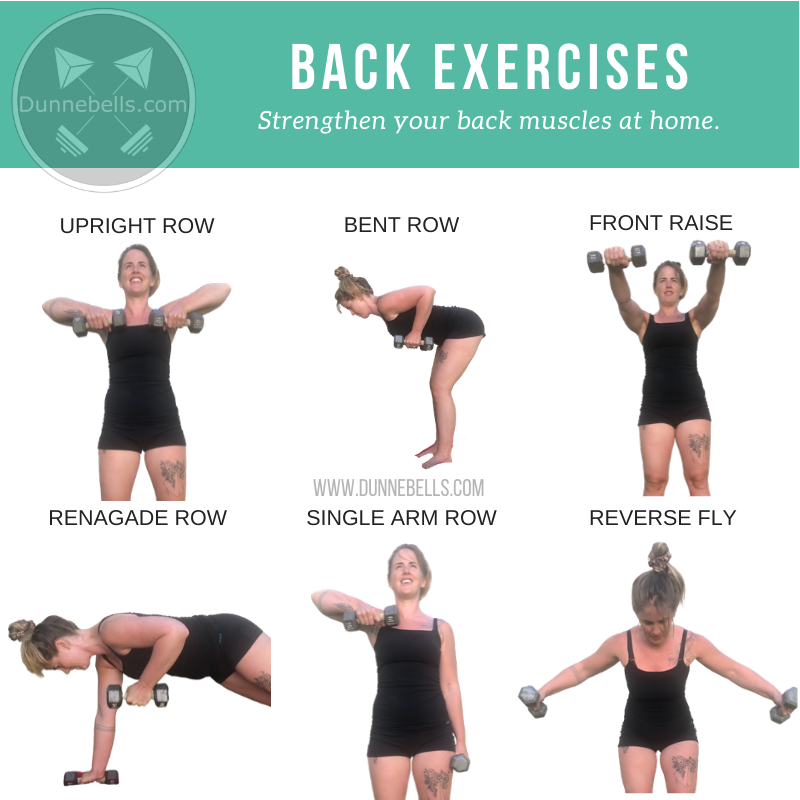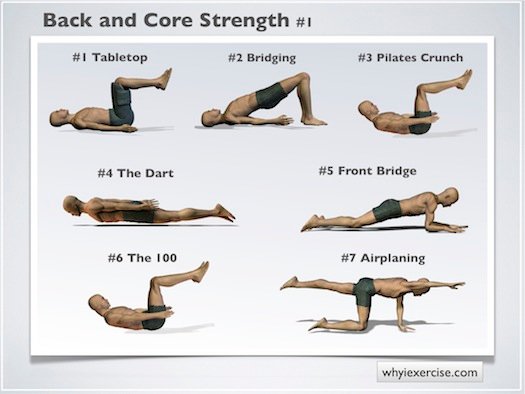It was a typical Monday morning for Sarah. She felt a twinge in her lower back as she bent down for her morning coffee. Having dealt with back pain for years, she knew it was time to take charge of her health. She found back workouts at home online and was relieved to strengthen her back from her living room.

Sarah was determined to beat her back pain. She learned that back workouts are key for everyone, especially women, to ease back pain and boost fitness. She started a routine with exercises made for the back. This journey through the best back exercises for women turned her pain into power, making her daily life better.
As you read on, learn how back workouts at home can empower you. They improve core stability and lead to a healthier, pain-free life. You can find the right back workout to fit your fitness goals and move from discomfort to resilience.
Table of Contents
Understanding the Importance of Back Strength
Back strength is key for everyday activities. It helps with lifting, reaching, and even sitting. For women, strong back muscles boost performance and improve mobility. Strengthening these muscles helps prevent back pain and improves life quality.
The Role of Back Muscles in Daily Life
Back muscles help with many daily movements. They keep the spine aligned and support the body. A strong back helps with physical tasks and boosts emotional well-being, making daily routines less uncomfortable.
Exercising these muscles can change how you feel and protect you from injuries.
Preventing Back Pain through Strength Training
Working out to strengthen the back can lessen back pain. Studies link weak gluteus maximus muscles to back pain. Doing exercises like glute bridges and planks strengthens muscles that support the spine.
- Perform glute bridges with a hold of at least two seconds for 10–15 repetitions.
- The bird-dog exercise promotes stability and should be repeated five times with a 15-second hold.
- Planks can be sustained for 10–30 seconds, focusing on pelvic alignment, and performed five times.
- Side planks and abdominal exercises like crunches help reinforce core strength essential for back pain prevention.
Stretching with exercises like knee-to-chest stretches and lower back rotational stretches also supports spinal health. Adding these stretches to your routine strengthens back muscles and boosts flexibility. This is key for any workout plan.
Key Muscles Targeted in Back Workouts
Working the right muscles is key in any good back workout, especially for women. These exercises hit several muscles crucial for posture, stability, and strength. Knowing these muscles helps make workouts better and lowers injury risk.
Overview of Major Back Muscles
Women’s back muscles include many important groups, each helping with different movements and stability. The main muscles worked in back exercises are:
- Latissimus Dorsi: This big, triangular muscle goes from the lower spine to the upper arm, helping with pulling.
- Rhomboids: These muscles are between the shoulder blades and pull the shoulder blades together.
- Trapezius: This muscle covers the upper back and neck, aiding in lifting and rotating the shoulders.
- Erector Spinae: Along the spine, it keeps posture and helps with back bending.

Understanding the Latissimus Dorsi and Their Function
The latissimus dorsi, or lats, are key in many everyday movements. They are mainly used for:
- Pulling actions, like in rowing and pulling exercises.
- Keeping the spine stable during weightlifting.
- Boosting upper body strength for everyday tasks.
Exercises for ladies focusing on the lats improve strength and stability. Training these muscles betters posture, cuts back pain, and builds confidence in movement.
Benefits of Back Workouts at Home
Working out your back at home has many benefits, especially for those looking to boost their health. These exercises are key in *improving posture* and easing pain from sitting too long or bad posture.
Improving Posture and Reducing Pain
Doing back workouts made for women can fight poor posture, especially for desk workers. A 2019 study found 75% of call center workers had chronic back pain. Yoga or resistance training in a ladies back workout can fix spinal alignment and ease back tension. These exercises also make the muscles more flexible, lowering the chance of muscle injuries.
Strengthening the Core and Enhancing Stability
Back workouts also boost core strength and stability. They help support the whole body, easing pain from misalignments. Exercises for different muscles like the lats, traps, and lower back create a balanced body. With the right training, back workouts make everyday tasks like lifting or bending easier.
| Benefits of Back Workouts | Description |
|---|---|
| Improving Posture | Exercises help align the spine, reducing pain and strain. |
| Reducing Back Pain | Tension alleviation leads to a more relaxed body. |
| Strengthening Core | A strong core supports better stability and movement. |
| Enhancing Flexibility | Promotes greater range of motion, decreasing injury risk. |
| Boosting Overall Strength | Improved muscle balance enhances performance in other activities. |
The Warm-up: Preparing Your Back for Exercise
A good warm-up is key for a healthy back and muscles. Just five minutes of warm-up can boost your workout. It gets your muscles ready and helps prevent injuries during back exercises for women.
Importance of a Good Warm-up
Warming up your back means doing moves it doesn’t do daily. The spine can extend, flex, bend, and rotate. Doing activities that mimic these helps. Foam roller back extensions and dynamic stretches reduce stiffness and improve motion.
This is crucial before back exercises. Back muscles can easily strain or tear.

Dynamic Stretching for the Back
Dynamic stretching is best for warming up the back. Try these moves:
- Arm circles
- Side bends
- Hip circles
- Torso twists
Do each stretch for 30 seconds, repeat 2-3 times. This gets your back ready for workouts. Using light weights and increasing reps slowly keeps you safe and strengthens your back.
For more tips on keeping your workouts effective, check out this helpful resource.
Best Back Exercises to Do at Home
Doing back exercises at home is key for women wanting to boost strength and stability. A good routine helps with muscle endurance and fitness. Here are top back exercises for women that need no special gear.
Resistance Band Pull-Apart: A Solid Warm-Up Move
The resistance band pull-apart works on the rear deltoids and upper back. It’s a great move that gets the posterior chain moving. Hold the band at shoulder height and pull it apart with your elbows bent. Do 3 sets of 15 reps.
Bent-Over Rows: Essential for Developing Upper Back Strength
Bent-over rows are vital for upper back strength. You can use dumbbells or household items like water jugs for more resistance. Keep your back straight and bend at the hips, pulling the weight to your lower rib cage. Do 3 sets of 10-15 reps, focusing on controlled movements.
Pull-ups: A Bodyweight Classic for Back Strength
Pull-ups are a top bodyweight exercise for back strength. Doing 3-5 sets of as many reps as you can will really challenge your upper body. Focus on slow, controlled movements to work the latissimus dorsi and improve muscle tone. These exercises can be modified with assistance or bands if needed.
| Exercise | Sets | Reps | Rest Time |
|---|---|---|---|
| Resistance Band Pull-Apart | 3 | 15 | 60-90 seconds |
| Bent-Over Rows | 3 | 10-15 | 60-90 seconds |
| Pull-ups | 3-5 | Max | 60-90 seconds |
These back exercises offer unique benefits, making them key for a full workout routine for women. Sticking to them with proper form boosts back strength, stability, and health. Try to do these exercises two to three times a week, upping the frequency as you get stronger and more confident.
Effective Back Workouts at Home
Creating a strong back workout for women means picking exercises that hit different back muscles. This makes sure you work out every part of your back. Doing so helps improve your posture, lessens pain, and boosts muscle strength.
- 【The Sportsroyals Squat Machine 】 A new trend to have cause traditional squats are too slow to be effective. Combining t…
- 【Butt Lifter】The Sportsroyals perfect home fitness equipment with squat form, shifts the weight back to your glutes, get…
- 【Full Body Workout】The Sportsroyals Squat Machine combines the features of the Row & Ride, making it the ideal for weigh…

- Full-body Adjustable Weight Bench – Work Your Arms, Back, Chest, Glutes, Hamstrings and Core. Use for Bench Press, As a …
- Lift with Confidence – Our Multi-functional Workout Bench Works Well with Weights Dumbbells Set and are Made with High G…
- Comfortable and Sturdy – This Multi-functional Adjustable Bench is Designed with Triangular Base Support and Thick Cushi…

- Efficient Back Training – Designed for optimal back muscle strengthening and stretching. The 45-degree ergonomic design …
- Multifunctional Fitness Equipment – This versatile back extension bench targets back, core, hip, and leg muscles while s…
- Durable Construction – Crafted from high-strength carbon steel with an anti-abrasive coating, this hyperextension bench …

- 💪 Core Workout Equipment: Wonder Core 2 has twice the amount of incredible exercises that you can do right in home, it g…
- 💪All-in-One Exercise Equipment: Wondercore 2 puts the focus on each part and blasts like a laser on your upper, middle, …
- 💪Ingenious Spring System: Wonder Core Two equipped with 2 springs, which can help you get back to your starting position…

- 【COMPLETE BODY WORKOUT COMBO】The 2-IN-1 Stepper engages your glutes, quads, hamstrings, and calves with step-ups and dow…
- 【TRACK YOUR FITNESS】Stay informed and motivated with our digital monitor, displaying essential metrics including Time, C…
- 【CUSTOMIZABLE WORKOUT EXPERIENCE】Tailor your workout to your desired intensity using the adjustable hydraulic step heigh…
- 【WHY SQUAT】Squats are not only effective for building an insanely strong lower body, but also because they deliver sever…
- 【HOW IT WORKS】Tone the lower body by using your glutes, quads, and hamstrings to push down to a squat. Work your shoulde…
- 【REDUCED JOINT IMPACT】Skip the weights, this squat trainer will reduce the amount of stress on the knees and joints that…

Creating Your Customized Back Workout Routine
A great back workout for women should cover all major back muscles. This includes the lats, upper traps, lower back, and more. Here’s how to make a routine that fits you:
- Start with a warm-up to get your muscles ready.
- Pick exercises that work on different back muscles, like:
- Resistance band pull-aparts
- Bent-over rows
- Deadlifts
- Wide-grip pull-ups
- Do each exercise for 10-15 reps, rest a bit between sets.
- Make sure to focus on proper form to avoid injury and get the best results.
Sample Back Workout Circuit for Women
Start with this sample circuit. It combines exercises that target various back muscles:

| Exercise | Repetitions | Sets |
|---|---|---|
| Resistance Band Pull-Aparts | 15 | 3 |
| Bent-Over Rows | 12 | 3 |
| Deadlifts | 10 | 3 |
| Wide-Grip Pull-Ups | 8 | 3 |
This circuit shows how to make a solid back workout. By doing these exercises, you work out many muscles at once. This helps build strength all over. Try this circuit 2-3 times a week for the best results.
Incorporating Dumbbells into Your Back Workouts
Dumbbells are great for back workouts women can do at home. They make exercises harder and help grow muscles and strength. It’s key to use the right form to avoid getting hurt and get the most out of it. The wide dumbbell bent-over row is a top pick for working the back muscles.
Safe Techniques for Dumbbell Use at Home
When adding dumbbells to your back workout, safety comes first. Here are some tips to keep your training safe and effective:
- Start with lighter weights to get your form right.
- Keep your core muscles tight to keep your body stable.
- Make sure you have a good grip on the dumbbells.
- Work out on a flat surface with enough room to move.
- Do a warm-up to get your muscles ready for the exercise.
Wide Dumbbell Bent-Over Row: Execution and Benefits
This exercise targets the lats and upper back, helping you stand up straight. Here’s how to do it right:
- Stand with your feet shoulder-width apart, holding a dumbbell in each hand.
- Bend your knees a bit and lean forward at the hips, until your torso is parallel to the ground.
- Keep your back straight and let the dumbbells hang at arm’s length.
- Pull the dumbbells towards your waist, spreading your elbows wide.
- Bring your shoulder blades together at the top, then lower the weights back down.
This exercise works many back muscles and helps with back growth. It’s a great choice for a back workout with dumbbells for women. You can use heavier weights as you get stronger.
| Training Type | Sets | Reps |
|---|---|---|
| Strength Training | 4-5 | 6-8 |
| Hypertrophy | 3-4 | 8-12 |
| Endurance Training | 2-3 | 12-15+ |
| Power Training | 3-4 | 3-6 |
Adding exercises like the wide dumbbell bent-over row to your routine boosts your back strength and stability. It’s perfect for back workouts women can do at home. It suits different fitness levels and goals.
The Importance of Rest and Recovery
Rest and recovery are key to any workout plan, especially for strength training. It’s important to listen to your body to know when you need a break. Signs like sore muscles, feeling tired, or pain mean it’s time to rest.
Taking rest days is crucial for doing well and staying healthy. For moderate or intense activities, make sure to schedule these breaks. This helps your body recover and perform better.
Listening to Your Body: When to Rest
Rest is crucial for your workouts. Experts suggest taking rest days every three to five days. This helps prevent injuries, aids muscle recovery, and boosts performance.
New runners should start with three running days a week. This approach helps avoid overuse injuries.
Active Recovery Techniques for Muscle Maintenance
Active recovery helps keep muscles in top shape without overstraining them. Doing yoga or stretching for 10 to 15 minutes can help with recovery. Light activities like walking or swimming also aid in healing.
Getting enough sleep is key for muscle repair. Sleep helps your body fix muscles by releasing healing hormones at night.
Advanced Back Exercises for Experienced Individuals
For those wanting to boost their back workout, advanced exercises are key. Deadlifts and suspended rows are great for this. They work the back and core muscles, which are vital for strength.
Deadlifts: A Compound Move for Total Back Strength
Deadlifts are a top pick for strengthening the back. They work the entire back, not just the lats. They also hit the upper and lower traps, erector spinae, and more. Adding variations like the barbell deadlift can help grow strength and muscles.
Suspended Rows: Benefits of Core Stability
Suspended rows are perfect for those looking to improve their back and core strength. They help keep your posture right and prevent injuries. Adding these rows to your routine means better coordination and muscle use.
| Exercise | Muscle Groups Targeted | Benefits |
|---|---|---|
| Deadlifts | Whole back, glutes, hamstrings | Total back strength, muscle growth |
| Suspended Rows | Upper back, lats, core | Enhanced stability, coordination |
| Wide Grip Pull-ups | Lats, teres major | Additional muscle targeting |
| Barbell Dead Rows | Upper back, lats | Explosive strength building |
Adding these exercises to your routine can greatly improve your back strength and stability. Training different back muscles helps you get better results and lowers injury risk.

Common Mistakes in Back Workouts
Back workouts need careful attention to avoid common mistakes. Some people risk injury by using the wrong form or skipping warm-ups. Fixing these back workout errors helps prevent injuries and makes workouts better.
Improper Form Leading to Injury
Improper form often leads to serious injuries. The back muscles are complex and need precise targeting. Here are some tips to avoid this:
- To target lat width, focus on chins and pulldowns with a wider grip.
- For lat thickness, engage in free-weight rows like barbell, T-bar, and dumbbell rows.
- To activate lower lats, perform underhand, shoulder-width pull-downs and one-arm low-cable rows.
Not Warming Up or Cooling Down Effectively
Skipping warm-ups and cool-downs hurts muscle recovery and workout effectiveness. It’s key to spend time on these steps:
- Incorporate deadlifts regularly to strengthen the lower back.
- Perform lower back isolation exercises like back extensions and stiff-leg deadlifts to enhance overall back development.
Not having strong enough grip strength limits back workout results. Training straps for rows, chins, and pulldowns boost performance. Switching grip styles improves grip strength and engages back muscles better. Machines can limit muscle stimulation, so focus on free-weight exercises like deadlifts, barbell rows, and chins.
Using correct form and focusing on specific back muscles leads to better results. Straight-arm pulldowns are great for effective lat isolation.
| Mistake | Solution |
|---|---|
| Improper Form | Focus on grip style and exercise type for specific lat engagement. |
| Neglecting Lower Back Training | Incorporate deadlifts and lower back isolation exercises. |
| Overlooked Grip Strength | Use training straps and alternate grip styles. |
| Relying on Machines | Prioritize free-weight exercises to enhance stimulation. |
| Overusing Secondary Muscles | Focus on proper form to isolate back muscles effectively. |
By understanding and fixing these issues, people can make their back workouts better and lower injury risks. A strong back is key for improving strength and development in all muscles.
Monitoring Progress: How to Track Your Back Strength
Tracking your progress is key to reaching your fitness goals. Setting clear targets for back workouts boosts motivation and ensures steady improvement. A structured plan keeps you focused and accountable as you work towards your goals.
Setting Goals for Your Back Workouts
Make sure your back workout goals are clear and measurable. Decide on the maximum weight you want to lift or the number of reps you aim for. Break big goals into smaller tasks to make them easier. Using a workout journal can help you plan and track your progress better.
Using a Fitness Journal to Track Progress
A fitness journal is a great way to keep track of your progress and improve your routine. Writing down your workout plan takes just under a minute, keeping you organized. Keep track of exercises, weights, and reps to see your progress over time. Using tally marks for completed sets makes tracking easier during workouts.
| Feature | Description |
|---|---|
| Versatile Tracking | Adaptable for various workouts: strength training, bodyweight exercises, and sprints. |
| Real-Time Updates | Instantly record exercises and track your back workouts. |
| 1-Rep Max Calculation | Use the Epley formula to gauge strength gains (1RM = Weight * (1 + 0.033 * Reps)). |
| Visual Progress | Create graphs in Google Sheets to illustrate trends over time. |
Test your max strength every month with a few key exercises. This approach helps avoid burnout and saves energy for analysis. Using a spreadsheet lets you see your progress visually, helping you reach your fitness goals.
Nutritional Tips to Support Back Strength Training
Nutrition is key to boosting back strength training. It’s important to eat right to see the best results. Eating well supports muscle growth, recovery, and fitness. Knowing what your body needs for protein and hydration is crucial for doing well in workouts.
Importance of Protein for Muscle Recovery
Protein is vital for recovering after back workouts. It helps fix muscle fibers that get hurt during exercise. Good protein sources are:
- Lean meats such as chicken and turkey
- Fish like salmon and tuna
- Dairy products such as Greek yogurt and cottage cheese
- Plant-based options including beans, lentils, and tofu
Eating these foods after workouts gives your body the needed nutrients. This helps with protein recovery and builds back muscles. It makes future workouts more effective.
Hydration and Its Role in Performance
Drinking enough water is key for good workouts and recovery. It helps with temperature control, joint health, and moving nutrients around. Here are tips for staying hydrated during back workouts:
- Drink water before, during, and after workouts to keep fluids balanced.
- Use electrolyte-rich drinks if you’re working out a lot or in the heat.
- Check your urine color to see if you’re drinking enough; it should be clear or light-yellow.
By focusing on hydration and nutrition for back workouts, you boost your performance and recovery. This lets you keep getting stronger in your strength training.
| Food Source | Protein Content (per serving) | Hydration Benefits |
|---|---|---|
| Chicken Breast (3 oz) | 26 grams | Helps maintain energy levels |
| Salmon (3 oz) | 22 grams | Rich in omega-3 fatty acids for joint health |
| Greek Yogurt (1 cup) | 20 grams | Contains probiotics for gut health |
| Tofu (1/2 cup) | 20 grams | High in moisture, aids hydration |

How to Motivate Yourself for Consistent Workouts
Staying motivated to exercise can be tough, but it’s key for lasting success. Setting achievable fitness goals helps clear the way to success. Having accountability partners makes the journey more fun and keeps you on track.
Setting Realistic Short and Long-Term Goals
Having both short and long-term fitness goals is a smart strategy. Short goals help you stay focused on now, while long goals keep you going over time. Simple steps like planning your workouts and getting your gear ready can make a big difference.
Starting with just 10 minutes of exercise can also kickstart a good habit. It might lead to longer workouts and make fitness a regular part of your life.
Finding a Workout Buddy for Accountability
Exercising with a workout buddy can really improve your results. Studies show it makes you perform better and stay committed. Getting friends or family involved makes fitness a fun activity.
This teamwork approach not only makes exercising more enjoyable but also helps you stick with it.
Integrating Back Workouts into your Weekly Routine
Planning your workouts is key to a well-rounded fitness plan. Adding back workouts to your routine boosts strength and improves posture. It also boosts your overall health. It’s important to think about how often and when you work out to fit your fitness goals.
Frequency and Timing of Back Workouts
Try to do back workouts 2-3 times a week. This helps muscles recover and keeps you moving forward. Here’s a plan you can follow:
| Day | Workout Focus |
|---|---|
| Monday | Back Workout (Strength Focus) |
| Wednesday | Full-Body Workout (Include Back Exercises) |
| Friday | Back Workout (Hypertrophy Focus) |
Balancing Back Workouts with Other Fitness Goals
Strength training for your back is important, but don’t forget about other fitness areas. Make sure to work on core strength, lower body, and cardio too. This mix helps you perform better, lowers injury risk, and aids in muscle recovery.
Exploring Other Workout Tools for Effective Back Workouts
Using different workout tools can make your back exercises at home better. These tools boost the effectiveness of your workouts and add variety. This keeps your sessions fun and productive.
Resistance Bands: A Versatile Option
Resistance bands are a great choice for strengthening your back muscles at home. They offer resistance to increase the intensity of your workouts. Their versatility lets you adjust the resistance level easily, making them perfect for all fitness levels.
Adding resistance bands to your routine targets bigger muscle groups. This makes them an excellent choice for back exercises.
Using Household Items as Workout Equipment
Your home is full of tools you can use for back exercises. Everyday items like water bottles, backpacks filled with books, or sturdy chairs can add to your routine. These items can replace or complement traditional weights.
For example, a filled backpack can be used for bent-over rows, adding resistance without needing a gym. This makes fitness accessible to everyone, no matter their resources.
Final Thoughts on Building a Strong Back at Home
Building a strong back at home is possible with dedication to fitness. You can do this by following a structured plan. This plan should include exercises like deadlifts, pull-ups, and dumbbell rows.
These exercises work on big muscle groups like the lats and traps. They also help improve your posture and lower injury risks.
It’s important to be consistent and work out two to three times a week. This will help you see the best results. Always focus on doing exercises correctly to get the most out of them and avoid getting hurt.
Using dumbbells and training both sides of your body helps build a balanced strong back at home. This approach also promotes muscle symmetry.
Don’t forget about nutrition and recovery. Drinking plenty of water and eating a diet full of protein helps your muscles recover and boosts your performance. Building a strong back is about exercising and living a healthy lifestyle.
This leads to better mobility, stability, and overall health.









